Medieval II: Total War
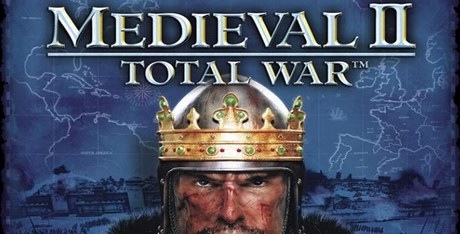
| a game by | Creative Assembly International Limited |
| Platform: | PC (2006) |
| Editor Rating: | 7/10, based on 1 review, 6 reviews are shown |
| User Rating: | 7.2/10 - 12 votes |
| Rate this game: | |
| See also: | Top 10 Total War Games |
Bastard ncsoft drummer boys! I'm sitting here at the world's largest games convention about to see one of the highlights of E3 2006, and all I can hear is the incessant poundings of a bunch of music student hippies hired by NCsoft to piss off anyone within a 30-mile radius of their stand. Still, it could be worse. The Creative Assembly's Ian Roxburgh and Mark Sutherns have been sitting next to these beat boys for the past two days, so much so that they've perfected the art of presenting Medieval 2 at a volume rivalling a pneumatic drill.
It's been just five months since we broke the news that the Total War family was soon to have a fourth arrival, but with Roxburgh and Sutherns in the mood to extol the virtues of their game, it's immediately apparent that they're keen to spill enough Medieval 2 beans to cover almost three pieces of toast.
"Everything is bigger and better than Rome" yells Roxburgh as he begins his presentation. "The battles have double the polygons, each troop is unique and there are numerous combat variations with thrusts, parries and fatality moves. We've also doubled the textures on the campaign map, and there are twice as many voiceovers and sound effects. We've even ensured that each nation has the correct accent."
Shout It Out
Roxburgh zooms into the campaign map, which radiates a refined clarity and depth of detail when compared to Rome's worldview. But the strategic map's enhancements run far deeper than cosmetics. "We're adding loads of new features," he bellows. "Click on any faction on the map and it'll give you a voiceover that reflects how it feels towards you. If a nation is amenable to you, they'll greet you, while a hostile nation will be far more aggressive. You'll no longer have to use the Diplomacy screen to find out how a nation feels." While Total War has been at the forefront of strategic innovation for the best part of six years now, one area that's lacked depth has been diplomacy, a failing that the team are keen to rectify. "We've spent a lot of time improving diplomacy," screams Roxburgh, as blood begins to seep from my eardrums.
"In Medieval2, the Al will not only remember previous dealings you've had with it but your dealings with other factions, too. It'll then base its stance towards you on all of those factors." Another new addition to the strategic map are princesses - pawns that can be used in a variety of underhand ways. Little more than whores in expensive garbs, these harlot diplomats can be prostituted to make alliances with rival factions (through arranged marriages), or sent to seduce enemy generals to your cause.
While we're on the subject of generals... "Each general's personality will have different effects on the battlefield or within cities," roars Roxburgh. "A general's attributes can also change, depending on how they conduct themselves on the battlefield." Mercilessly slaughter the prisoners you capture during a battle (a feature reprised from the original Medieval} and your general's 'dread' rating will rocket, making enemies fearful on the battlefield and civilians more obedient within cities. And while showing mercy m war may make your generals a target for big girly girl' remarks from opposing armies, at least the people will love them should you order them to liabysit a settlement. Unless of course they raid the fridge, invite over their girlfriend and leave sticky stains on the sofa, in which case, they could be faced with a revolution.
Hostile Intent
Also adding to the campaign map's strategic depth are merchants, a group of money-grabbing capitalists whose sole purpose in life is to amass money and resources through any means necessary. "If you want to delve a little deeper into the economy, you'll be able to move merchants to pockets of resources dotted around the map," howls Roxburgh. If allied factions have merchants guarding a resource, you can attempt a hostile takeover and force them off. It's like an economic rivalry that's totally separate to being at war with a faction"
Next up are heretics and witches, heathen wanderers who spread religious doubt throughout your provinces (causing social unrest) and convert impressionable priests to their way of thinking. "Heretics and witches will appear at various times and permeate through your land spreading heresy," Roxburgh continues, during a rare respite from the NC soft stand. "You can send in priests to convert them, but if they fail, they'll be turned into heretics too." And yes, you can burn them.
Kick Up The Arse
Avid Total War fans will be happy to know that the assassination animations - brief cut-scenes, which chart the success or failure of a professional hit -are Ixick after their disappearance in Medieval and Rome. "We have loads of these, so it's unlikely you'll ever see the same one twice," screeches Roxburgh as the cacophony restarts. "There are different movies for all of the different targets you can kill, for successes, failures and even ones for when the target manages to escape," adds Mark Sutherns. Unlike Shogun's basic and repetitive animations, these murderous moments prove of the highest quality, perfectly raising that tension before reaching their unpredictable conclusions.
Another criticism of Rome was the relative comfort you'd enjoy once you'd built up a sizeable empire. With your capital city surrounded by vassal states, your kingdom's epi-centre would rarely feel threatened. Not this time, though.
"We're making the campaign map Al far more proactive than before. You'll find that your homeland will be attacked a lot more. Your enemies may stick a large army on a fleet and come and attack you at your main city. That's why all of the city fortifications you've built up for your main cities will become far more important this time around," hollers Roxburgh.
What's more, once your medieval empire becomes overwhelmingly powerful, you'll quickly find your rivals rallying together to oppose your expanding kingdom, a feature which the team hopes will make the game challenging from beginning to end. So, with the strategic map clearly enjoying a sizeable makeover, we move on to the part I've really been waiting for the most, the real-time battles...
To War!
During the course of the next 20 minutes, I sit through three battles, each one more brutal and cinematic than the last.
First off is the age-old grudge match between the English and the French, set in lush surroundings flanked on both sides by dense forests. With Roxburgh's English forces dug in along a ridge, the French infantry launch an audacious bid to turn themselves into gallic kebabs as they march straight onto a row of spikes placed down by his archers (an all-new feature), while they send their cavalry through the trees to launch a surprise attack. Misjudged in the extreme, Roxburgh quickly dispatches an attempted foot soldier diversion, leaving the French mounted knights isolated and vulnerable.
What strikes me most though isn't the French tactical naivety, but the breathtaking level of detail that these battles contain. Gone are the clone armies of Rome, replaced by rows of unique soldiers, their armour acquiring blood and mud as they duel with their opponents, before visibly scanning their surroundings for their next victim.
Dead bodies now stack up in horrific mounds - rather than the flat 2D corpses of Rome - while the battle physics have clearly enjoyed a makeover, with clashes looking more brutal and jarring than ever before. Individual blades of grass sway in the breeze, shrubs look prunable, weather changes dynamically and night-time battles are looking more visually impressive than ever, while every armour and weapon upgrade you make in the strategic map is now visually represented on the real-time battlefield.
Wall Fall
Battle number two is a desert skirmish. English crusaders battle the Egyptians, pounding the massed enemy ranks with mighty cannons. Finally, Roxburgh takes on an Aztec tribe. After obliterating their city walls with siege weapons (walls now crumble brick by brick, rather than in massive sections), the Iiainted South Americans spill out of the gates in their thousands, only to be to slaughtered by superior tactics and swords that aren't made from wood.
There'll be loads of new features in these battles that you'll have to take into account, like impassable terrain. The Al will look at that and think of how it can use it to its advantage," bellows Sutherns. "We've done hundreds of hours on the animation work, so that the battles feel far more realistic and fluid."
For now, that's all there is, but I've seen and heard more than enough to reinforce my belief that this next Total V/cir instalment could well pick up the baton from Rome and raise the RTS bar to even greater heights. As Sutherns and Roxburgh bid me a hoarse farewell, I leave their booth energised, ears ringing and bloodied, and ready to kill myself some drummer boys.
Papal politics
The pope and the crusades will play a far more prominent role than they did in the original Medieval. For starters, you'll have to manage your relationship with the pope much more carefully, ensuring you build plenty of churches and cathedrals, while making sure you stamp out any heretics or witches before they have a chance to infect your populace with their heathen views. However, if you fancy installing one of your own priests into the Vatican, you'll first need to get them elected to the College of Cardinals, then either win votes through virtuous deeds or by bribing other nations with fat wads of non-sequential bills stuffed into brown envelopes.
Once you build up enough influence with the pope, you'll then be able to persuade him to call crusades that are beneficial to your nation, at which point a bunch of inbred rich boys will march to their deaths to extend your holdings under the pretence of religious duty. To help speed them to their graves will be a double movement bonus as well as a battlefield cross that acts as a morale-boosting emblem. For the king, for god, for increased economical stability... To war!
The American dream
Towards the latter stages of the game, an historical event will insinuate that there could be land across the sea. That place is, of course, the Americas. Teeming with resources, you and every other nation will suddenly become locked in a race to get over there, cleanse the lands of any indigenous people (aka The Aztecs) and liberate all of the natural resources from these brutal, heathen, heretical barbarians who dare inhabit an area of such economic wealth.
But bolstering your coffers with the blood of innocent American tribes won't be easy. While their technology and weapons may be primitive (seems the nearest these boys ever came to armour was body paint), you'll soon discover that not only are they incredibly brave warriors, but that there's "fahsands of 'em", too. However, if you manage to pull it off and conquer the lands for yourself, you'll find yourself top of the Medieval Rich List in no time.
Download Medieval II: Total War

System requirements:
- PC compatible
- Operating systems: Windows 10/Windows 8/Windows 7/2000/Vista/WinXP
Game Reviews
Hello. You May remember me from such reviews as Shogun: Total War and Medieval - the multiplayer experience. Both great games, reviewed with typical subjective fervour. I would have reviewed the others too, if it wasn't for that Martin F***ing Korda muscling in on my territory.
The Creative Assembly know the score. They've had it up to here with him too. On being asked if someone from PC could come down to play Medieval II, they simply said: "So long as you don't send Korda." Apparently he swans around likes he owns the place, drinks all the Yop! from the fridge and bear-hugs everyone in sight. So I'm here instead, playing through the early stages of a campaign game and eager to reclaim the throne, as it were, while Korda sits at home playing indie garbage. Ha!
Sitting down to play Medieval II, even in the sterility of CA's meeting room, is like falling into your bed, only with fresh sheets and a bigger, softer, fluffier duvet - with knights on the cover, obviously. It just feels comfortably right. The first Medieval may seem like a game from the Dark Ages in comparison, but it had authenticity pouring of its ears and over its gorget (neck armour, duh). That authenticity has been carried over - indeed it's been built up further -with the variety in terms of units, their fluttering banners and new map furniture making the series come alive like never before.
You Are Beautiful
You can see that perfectly well yourself though, thanks to the accompanying marketing-approved images. And yes, it really looks that good. CA can be proud at what they have achieved in terms of the graphical finery on show, but such beauty can only impress for so long because you're not going to conquer much if you spend the battles watching your knights doing fancy Soul Calibur moves. While Medieval II will rock your world because it looks bonza (it was largely made at CA's outback studio), what will really make fans announce in the pub that 'actually, this is the best yet by heaps' is down to a couple of what may seem like minor features.
One is the massive influence that your piety will have on your relations with neighbours, more so than in the previous game, with favoured cardinals able to affect papal policy to a certain extent. In order to get into his good books, however, you have to accomplish missions for His Holiness. Missions will even come from traders, spies and other guildhall leaders too. Impress your local chapter of assassins, and they may be tempted into relocating their European HQ to your capital, thereby allowing you to train the iiberest killers in Christendom. There's certainly more to do this time around than simply shuffle army counters around the place.
Skip To The End
My favourite feature, and one I didn't have time to explore fully, was one that should address a problem that has been inherent in all the Total War games. Veterans know the one, where you're two-thirds of the way across the map, your enemies are scattered and really you're just sweeping a broom around. Games rarely ended in thrilling climaxes unless you were on the losing side. Now, with the Americas opening . up later in the game - effectively an expansion in itself - there's an end game that requires new strategies to deal with what will be literally hordes of ISm-worshippers happy to die for the cause. In short, Medieval II will be a game worth wanting to complete.To end with the traditional bluster, Medieval 2 looks good, nay it looks oorsomel It's probably the best Total War ever made, ever. Hollow words? Of course they are. After all, we've still to play a siege battle, a feature CA have yet to get spot-on. And being a pansy, I played in easy mode, so I can't vouch fully for the Al either. I can, however, confidently predict that Medieval II will be the improvement we expect it to be. and to improve on a classic is no mean feat. Already this is to Rome what the first Medieval was to Shogun, bigger and better in every way, yet comfortingly familiar and infused with the usual Total War-ness of games gone past Superlatives beware, Korda wiill be coming for you with a vengeance. Or I will. Hopefully. Game on.
To settle or not to settle?
If not now, maybe later...
One of Medieval Il's 'yeah, so what' features that you might have no interest in is that the tech tree is such that at some point in the game, you will have to decide whether a settlement should develop into a military fortress or a city. Fortresses, of course, are the places to pick up the best troops and are handy to run away to. Cities, on the other hand, are your economic centres and able only to raise the most basic militia units should conflict come a-knocking. 'Yeah, so what' you may repeat. But 'ah' I retort 'you can turn a city into a fortress later if need be, or vice versa.' Think about it Now think some more. Such redevelopment is expensive, but surely you can see the possibilities, hmmm?
Revolution, evolution, REVOLUTION, evolution. That's the development cycle by which the Total War series has single-handedly redefined the RTS genre over the past six years. And now, two years after Rome rode into town like a triumphant king to batter its competitors into a powdery submissive pulp with its ground-breaking blend of strategic depth and visceral, awe-inspiring real-time action, we arrive at an evolutionary junction for the franchise.
As with the last time the Total War series swapped renovation for decoration (with Medieval: Total War), we once again find ourselves revisiting the religiously fanatical era where superpowers from Europe, North Africa and Asia Minor carved each other up in the name of religion in order to extend their holdings and rake in as much cash as their coffers could hold.
Get On Your Horse
Before your rampage of conquest begins, you must pick an empire from a choice of England, France, Spain, Venice, Denmark and The Holy Roman Empire. Aficionados of the series needn't worry though, as a multitude of other factions become unlocked once you've completed the 40-60-hour campaign.
Each nation proves suitably distinctive and provides a unique challenge, both in terms of unit selection and starting position. England's island-bound holdings prove a mixed blessing with only the rampant Scottish hordes to contend with, though across the channel, the single English foothold in Europe needs to be quickly expanded upon and protected from the marauding French.
If you decide to play as the French, you'll find yourself equipped with the best cavalry in the West though it's not till later in the campaign that the country we commonly associate with affordable booze, snails and mass-rioting really comes into its own, when it starts spewing out professional armies that don't just stand around grunting with dissatisfaction before trying to sleep with the wives of their fellow comrades.
At first glance, The Holy Roman Empire is the most tempting nation to start your Medieval II experience with, due to its generous land holdings - but as you'll soon realise, its realms are beset on all sides by enemies eager to take a bite out of any unprotected provinces. Venice finds itself in a similar situation, though its meagre collection of starting states means it's perhaps the most challenging of the six. while the axewielding Danes make for a perfect introduction if you're a Total War virgin.
To War!
So you've chosen your faction, disconnected your phone, stocked up on cheese puffs and you're ready to go. So what's new? Well, where do I begin? How about the revamped engine, which takes the graphical splendour of Rome and remodels its already ample assets with a plastic surgery-style makeover? Yup, that sounds like a pretty good place to start So let's get started...
Without doubt Medieval II is a visual feast one that'll milk your 3D card to within an inch of its life and fill your monitor with battlegrounds so detailed, you'll be reaching for a towel to wipe your enemy's blood from your forehead. I Proving far more power-hungry than its predecessor (if you want to really get the most out of it that is), your medieval troops radiate the kind of detail that Rome could only dream about after a hard night's orgy.
Gothic Knights rumble across grassy plains, kicking up plumes of dust as they march, their hooves pounding thunderously against the turf and their polished platearmour suits glinting majestically as they catch the rays of the sun.
Cities steam with smoke that spews from the chimneys of each stunningly detailed building and billow smoke as enemy catapults and roaring cannons hurl balls of flame over their towering stone walls and set them ablaze. But that's just the edge of the glacier myfriends, as Rome's clone armies have been replaced by squads of fairly unique soldiers, while battlegrounds now possess far greater geographical diversity than ever before.
Rolling Hills
Terrain undulates, creating makeshift vantage points on which to plant your archers and artillery, while jagged, impassable mountains block your escape routes and make you think in new strategic dimensions. What's more, you can now line towering rock faces with missile troops who can send deadly volleys down the mountainside at their foes.
Fog, rain and snow restrict your view like never before, forcing you to squint into the gloom for the slightest hint of enemy movement, while your pulse beats in your brain like an overheating jackhammer. In the presentation stakes, Medieval Il's real-time battles are almost beyond reproach. Now you may not have seen this coming -I know I didn't - but despite their undoubted qualities, these real-time battles aren't quite the leap forward for the series that perhaps they could and should have been. While having unique-looking troops using melee combinations rather than clone armies that simply hack at each other is an RTS wet dream, the level of differentiation isn't always all that easy to distinguish in the midst of the game's titanic blood-baths. As a result, these skirmishes often don't look and feel all that different to Rome's unless viewed from extremely close range.
What's more, the bone-crushing army impacts captured so perfectly in Rome - I particularly the cavalry charges - seem to lack a certain amount of weight and brutality here, with units often pulling up at the crucial moment of impact.
Finally, the control issues that haunted Rome: Total War - Alexander once again rear their ugly heads here. Cavalry is a particular culprit here, sometimes doing the exact opposite of what you tell them to and generally galloping their way into situations that threaten the very outcome of your carefully laid battle plans while you scream at your monitor and your neighbours call the police.
Bugging Me
Don't get me wrong, Medieval Il's battles are superb, visceral, brutal and so thrilling your heart will fracture your ribcage. They're also further embellished by the return of hostage-taking and the reprisal of Barbarian Invasion's visually spectacular night-time encounters. However, they never really feel all that different to Rome's conflicts and fail to quite live up to expectations due to an assortment of niggles that chip away at you like a woodpecker that's been surgically implanted into your skull.
Why, for example, can you no longer place your formations anywhere within a city or castle when defending it? Why do siege battles, despite their pyrotechnic splendour, still often boil down to just knocking a hole in a wall and charging through it? These problems are by no means terminal and in no way prevent Medieval II from being a sublime piece of programming, but they're enough to irk you and make you realise that in terms of the real-time battles, perhaps Medieval II isn't the hugely impressive leap forward from Rome that we were all hoping for.
Return Of The Map
Thankfully, the same can't be said for the turn-based strategic map, which trounces all of its predecessors with its sheer level of detail and breathtaking array of options, despite the odd balancing issue. Coupled with innumerable tweaks and improvements, its this part of the game that makes Medieval II stand apart from its predecessors like a giant at an under-tens basketball club.
Regions burst at the borders with geographical features, while armies, agents, merchants, priests and princesses meander between settlements on a variety of diplomatic, military and clandestine missions. The sheer magnitude of options available to you between each titanic real-time encounter is stupefying, urging you to tinker with every facet of your empire from population control to your relationship with the Pope.
Reality quickly melts away as you navigate the map, tending to the minutiae of your rule with the superbly streamlined and intuitive interface, and guided by the excellent advisors which prevent you from ever having to trawl through the hefty manual to learn how a certain game mechanic works. You'll spend hours agonising over how to best balance your economic and military budgets, while brokering deals with rival factions and forging alliances that'll best serve your nations interests.
Money Or Might?
Perhaps the strategic map's biggest overhaul is the way that settlements work. No longer is every region ruled from a city/fortress hybrid that's as economically adept as it is militarily. Oh no my compadres, those days are gone. You now have the option of constructing either castles or cities, both of which carry their own unique set of advantages and disadvantages.
Cities are the economic and cultural centres of your empire, allowing you to build roads and markets, and tax your populace as you see fit However, despite being encircled by stout walls, their defensive capabilities are limited, a problem that's compounded by the meagre selection of units that you can train within their walls. Castles are, as youd expect the exact opposite. While these fortresses may be militarily mighty and provide a cornucopia of options when it comes to constructing armies and defensive structures (including multiple layers of defence later on in the game), theyre about as economically viable as a pissed-up tramp asking for a loan while knocking back his fourteenth can of Special Brew of the morning.
Another new feature is the emergence of guilds. Every so often, one of these guilds will want to set up shop within your city walls and for a small price, you can reap the benefits that they bring to your provinces. Merchant guilds, for example, help cities to prosper economically, while Thieves guilds will bolster your nation's subterfuge abilities and cause the sudden mysterious disappearances of thousands of hub-cabs.
This subtle shift in settlement emphasis forces you to think about your every move even more strategically than ever before, ramping up the realism level and utterly immersing you in a Medieval world, where only the most ruthless and two-faced prosper.
The Popeandi
The Pope also plays a prominent role in deciding your nation's prosperity. Having made a cameo-like appearance in the original Medieval, the Pope's role has been significantly bolstered this time around and now reflects his true influence throughout the medieval period. Making sure you keep His Holiness on side isn't just a necessity, but a serious challenge. Constructing churches and spreading the good news will help keep him on side, but making sure you don't attack too many Catholic factions is also paramount if you're to avoid being excommunicated.
Get on his good side, and hell show you favour. Displease him and hell order you to stop attacking your fellow Christians. This latter scenario also works as a subtle way of balancing the campaign, as it prevents you from becoming too powerful too quickly, and means you actually take the time to slow down your conquering exploits and enjoy the multitude of social and political options on the medieval menu.
Keep Him Sweet
Of course, the best way of keeping the Pope onside is by getting one of your own (or an ally's) cardinals elected. Once he departs from this medieval world and meets his maker, elections are held to find a new resident for the Vatican, and if your man amasses enough votes, then you'll be in for an easy ride for the next 20 turns or so.
The Pope can also call Crusades, ordering you and your Catholic brethren to muster armies and march to the Middle East in order to 'reclaim' the Holy Land. Should you decide to jump onto the Crusading bandwagon, your men will be sped along by religious fervour, allowing them to cover ground quicker than normal. Staying clear of the Pope's legion of roaming inquisitors is also highly prudent, as they're more than happy to unceremoniously bum any of your family members or generals who whiff even slightly of heresy. Of course, there's always the option of simply attacking the Vatican, but with the risk of incurring the wrath of every Catholic faction on the map, it's a hugely risky strategy.
Medieval H's strategic map is a hulking world of murder, intrigue and goodness. No major historical event is ignored, be it the first sightings of the Mongol hordes approaching Europe or the discovery of windmills. And with the map expanding to even more impressive dimensions when the Americas are discovered, this is unarguably the most enthralling Total War turn-based experience yet.
Concluding An Era
As evolutions go, Medieval II has certainly delivered, upping the stakes both visually and in terms of gameplay. While the slightly glitched real-time battles may not be ah that much different from Rome's, and naval battles and new multiplayer options are still conspicuous by their absence, there's simply no way that any self-respecting strategy fan can spend this Christmas doing anything other than rampaging across the world on a whirlwind of medieval conquest.
This latest evolutionary step for the franchise feels like the final piece of the jigsaw for the series in its current guise, filling in the omissions of the previous games with aplomb, while bolsterjng the strategic map to even greatfirFieights. However, its starting to feel as though the franchise now needs to take that next major step - be it naval battles or more detailed siege warfare (or preferably both) - in order to maintain the superiority that it's enjoyed over its competitors for so many years.
For the time being though, sit back and enjoy the evolution and all of the delightful tweaks and innovations it brings to this majestic series - because if The Creative Assembly sticks to its strategic template, then another Total War revolution could be just around the comer.
Conquering the Americas
Just when you thought it was all over...
About three-quarters of the way through the game, you're in for a treat as an all-new Total War feature makes its debut and turns the entire campaign on its head. Suddenly, the Americas are discovered and a massive rush ensues as you and your rivals conduct a mad genocidal assault on the unsuspecting and incredibly rich Aztecs tribes. The nation that proves most successful in this conquest suddenly finds itself in a very advantageous financial position and the wealth to be gained can turn even the most redundant enemy into a superpower.
However, standing between you and bags of gold are tens of thousands of fanatical Aztec warriors, who make up for their lack of armour and technology with sheer numbers. The first time you saunter up to an Aztec army, you'll be struck by the sheer magnitude of your task. And with your armies being stretched back home due to the numbers you need to send to defeat these tribesmen, your dreams of conquering the natives could turn your European/Asian campaign into a nightmare.
Developer's Commentary
EXTENDING THE EMPIRE: Glastonbury: "We had a completely new game engine from the original Medieval, which allowed us to move the battle engine from being sprite-based to 3D models. Having these 3D models meant we could have far more visual detail over Medieval. With regards to building on Rome, the aim was to create a far more 'Hollywood' feel, so we added the variation in unit models, better combat choreography and better light controls. From a production perspective, we really focused on quality and I think the look of the game is a testament to that, as well as to the quality of our artists."
STATE AGENTS: Toose: "We wanted to give the player more ways to influence their finances, diplomacy and religion, but at the same time without creating any sort of heinous micro-management The new agents like merchants and princesses are really simple to use, and that was a key part of the philosophy in adding things to the game. The new agents were a means of adding more depth without getting bogged down."
Glastonbury: "Princesses were a part of the medieval experience that we felt couldn't be left out. By adding the other agent types, we tried to capture the feel for the era. At the time, the three merchant city-states of Milan, Venice and Genoa were very powerful; by adding merchants, we wanted to capture that. This was the same for heretics and inquisitors."
STONE CIRCLES: Toose: "Having multiple layers of defence for LXr castles was the ideal way to make settlements that were genuinely difficult to siege. We're making castle walls even stronger in the expansion Kingdoms, so you may need several cracks at the bigger castles to succeed." Glastonbury: "Siege battles in Rome were too easy: besieging a castle is very hard, especially if the people in the castle have a good food supply. We wanted to have multi-turn campaign sieges, where it would take several turns to complete the battle one layer of defences at a time. In-between the battles, each side would be able to restock and regroup. We got the multiple defence layers into the battle engine, but the multi-turn sieges didn't make it."
CITIES AND FORTRESSES: Glastonbury: "Unlike games such as Civilization, in Total War each city isn't easily maxed out, so you have to really choose which ones are going to be economic or military powerhouses. Adding castles reinforces this and you really want to have a powerful castle near the battlefront to keep your armies supplied with good troops."
Toose: "By having two types of settlements we gave the player a lot more choice about how they gear any given region. Castles produce a better spread of units, but cities make far more money. You need a combination of both to have the most effective empire."
SHIPPING BUGS: Glastonbury: "Since we started with the Rome code as the base for Medieval II, we were able to address the areas we felt gave us issues. But Total War games are by their very nature, huge undertakings. With a code-base the size of Medieval II there are always going to be bugs that we don't discover until the code is out in the wild."
Toose: "Bugs tend to cause both the biggest headaches in development, but also help to provide the most laughs. We had one where men climbed ladders with so much gusto that they managed to insert themselves into the chap further up the ladder. Glastonbury: "The funniest graphical glitch I saw was caused by a change to the collision system for soldiers that resulted in them getting massive repelling forces from the ground. Men would randomly be thrown into the air, screaming and flailing. They were like popcorn in a frying pan.
MISSING FEATURES: Glastonbury: "A shipped game never resembles uo what the team originally sets out to create - there are always features that are added or removed for various reasons. You get so close to the product that it becomes like a child and it's disappointing when a feature has to get cut for whatever reason. Multi-turn sieges was one feature we couldn't include, and we also had plans to make further improvements to diplomacy and a completely re-imagined auto-resolve system.
Toose: "There were a few features that we weren't able to put in like moats and being able to control reinforcement armies so you can assemble large forces effectively. These are features we're including in the Kingdoms expansion."
WEIGHT OF EXPECTATION: Toose: "Even w J though this was our first solo project and there were a lot of green faces in the studio, none of us suffered from performance anxiety, nor stopped to contemplate being compared to the UK studio. We just had self-belief and enthusiasm to do good work." Glastonbury: "Medieval II was a chance for this studio to stand on its own and prove itself - from day one of the Brisbane studio this had always been the plan. So it came down to us being masters of our own future and the pressure that comes with that. The core team for Medieval II worked on Rome, so by the end of Medieval II those people had been working on Total War for many years.
ROOM FOR IMPROVEMENT: Toose: "The major area that could have Lar been improved is Al, which is the answer most studios should give if they're honest. That's simply because creating good Al is really hard and the more complicated your game, the more complicated your Al has to be. Medieval II is really complicated and thus, we could always keep improving the Al.
"The second area would be balancing, and that's purely because we shipped a game with 21 factions and close to 400 units. That's a ludicrous amount of stats to tune, and so more time would translate to better results. It's something we've examined again with Kingdoms. History isn't balanced, and so certain factions are harder to play than others. We balance the game so that when you play in battle mode, each faction has strengths and weaknesses in its unit line-up. Beyond that, we let player skill and geographic opportunity dictate balance.
Go On, Have A Guess?"
"Napoleon: Total Wart'?" "Nope." "Mutant Space Monkeys: Total Wart" "Sorry, wrong again." "Mods Vs Rockers: Total Wart" "Give up, dunno."
"It's..." drum rolls, fanfares, really need a piss I'm so excited - "Medieval total War" it was about the extent of my conversation with ZONE'S commander- in-chief Sefton about the imminent announcement of the new Total War game, a discussion that concluded with me jigging around the room in a urine-streaked stupor, while Sefton called security to have me removed from the building.
If you've played any of the Total War games before - most notably the latest instalment of the series, Rome - you'll understand my spontaneous impersonation of an incontinent Michael Flatley. Maybe you're even doing one yourself right now. After all, these pages are dripping with visuals so luscious they'd prompt even a 90-year-old arthritic drunk to rise from his seat and dance around his colostomy bag from sheer delight But as you're about to find out in this, the world's first-ever look at the latest instalment of the all-conquering Total War series, Medieval 2 isn't just a visual feast - it's also packed with meaty goodness in the ganieplay stakes, too.
Ramping It Up
Having appeased Sefton with flowers, chocolates and enough cash to put down a deposit on a new house in his native Yorkshire (0.20 in real money), he re-instated me as the man chosen to speak with Bob Smith - project director of the Australian CA team behind Medieval 2. And so, with medieval torturing tools at the ready - just in case he wouldn't talk - I met up with said Smith for an afternoon of interrogation and song. Actually, was pretty much just interrogation, though I did have a rendition of Killing Me Softly ready, just in case the thumbscrew didn't work.
"Our aim is to improve upon the gameplay of Rome and bring its awesome gameplay to the medieval era, while raising the spectacle of the Total War series to a whole new level" Smith told me. "The period is renowned for, huge castles, lots of armour, colourful flags and heraldry. We're raising the bar right across the board from the campaign map to the historical and multiplayer battles. The overall structure and gameplay will be similar to Rome's, but it'll also incorporate some elements from the original Medieval such as the Pope and the Crusades."
Medieval Beauties
I'm gonna go out on a limb here and guess you've probably already taken a sneaky peek at the rest of the pages of this preview, drooled lustfully on the pages and maybe even contacted your bank manager to discuss the possibility of a loan to cover the cost of a new graphics card. Well, for starters, you needn't panic if your machine's still packing a 'more mature' 3D card, because just like its predecessors, Medieval 2's titanic battles will be massively scalable to cater to the power of your PC. And even though it's still too early to talk spec specifics, Smith seemed confident that Medieval 2 is set to be every bit as friendly to OAP cards and processors as Rome was.
But what about If you've already taken out a third mortgage for a PC that'll enable you to play Medieval 2 in all its glory? What's in store for you? Well, for starters, Medieval 2 is doubling, yes, doubling Rome's polygon count "The amount of detail in some of the textures is amazing, right down to the names of programmers inscribed on gravestones in the churchyard," enthused Smith. "We've stripped down and fully refurbished large chunks of the Rome engine. The methods for building and rendering cities and units is completely new, and the combat animation system lias been heavily revised."
Unique Killers
Oh, but wait my slavering friends, we haven't even got to the good bit yet Far from it Y'see, up till now, Total War has been the largest most realistic, adrenal-soaked cauldron of warfare ever to grace a videogame, where gargantuan armies batter each other into fleshy piles until one side stands victorious, knee-deep in every blood type under the sun. But there's always been one problem with this - all of the soldiers looked the same. Which is fine if you're making an RTS about Star Wars Episode U. but not ideal when making a historically accurate war simulation. All that however, is about to change.
"In Medieval2, we're removing the armies of clones that have been evident in the Total War series and many other RTS titles, and are introducing some individuality to the soldiers, in order to make battles more realistic and immersive,'' continued Smith, clearly eager to avoid an encounter with the rack I was busily constructing ($34.99 from Ikea). "In Medieval 2, units are made up of soldiers that are individuals Each model is now made with several heads, bodies and limbs The engine combines these together to make each man far more individual. On top of this, there are also multiple variants for shields and weapons, so each soldier has character and each unit of men looks and behaves like a realistic group of soldiers."
Flashy Moves
I continued the relentless interrogation and soon uncovered perhaps the single most exciting info nugget of the afternoon, just as I was finishing erecting an iron maiden. "The combat is far more intense than in Rome, with the men realistically swinging, blocking and throwing combo moves," Bob Smith revealed. "More than that fallen foes may even be dispatched with a devastating finishing move."
It's almost too good to be true. Gone are the mindless, hacking soldiers of Rome, replaced instead by warriors who attack each other with the brutality of a Millwall fen after closing time. "For example, a swordsman might swing to the left then to the right before following up with a stab to the stomach that'll knock his opponent down," continued Smith.
"He might then spin around and deliver a merciless finishing strike to the enemy while he's lying helpless on the ground." A spearman meanwhile, could apparently concentrate on jabbing and trying to keep the swordsman at range. If he gets too close, he could actually throw the assailant back with a shield barge, then run him violently through with a spear.
"You'll see these kind of moves being executed all over the battlefield and as soldiers fall, you'll see those still standing continually scanning their surroundings for their next kill. Touches like these make the huge battles so much more realistic and immersing, whether you're zoomed in on the front line or looking on from a distance" And if that's not enough to get you excited.
Smith also revealed that you can look forward to combatants gradually acquiring layers of blood on their armour that's spattered from their vanquished foes.
Now Here To Run, Now Here To Hide
As well as the skirmishes themselves, terrain has always played an integral part in ensuring Total War's gritty realism. But just when you thought this already monumentally lifelike battle simulator couldn't possibly get any better, another sublime addition comes along to prove you wrong. Through the use of impassable obstacles, Medieval 2 looks like it could raise the realism bar by yet another notch.
Up till now, Total War battlegrounds have only ever been seriously constricted by the boundaries of the map. Whether schlepping over flatlands or rolling tree-covered hills, your armies could move almost anywhere with little or no constriction. But this luxury of being able to retreat without too much thought for your surroundings will now be a thing of the past "In general, there'll be more terrain on the battlefield, with impassable cliffs and banks, walls and hedges and more buildings," beamed Smith. "The wise commander will be able to use these features to great advantage to protect his flanks and front as well as to disrupt enemy manoeuvres. Mud , could also be a problem for heavily-armoured troops, cavalry and infantry, so well be reflecting this in the game, too."
Fire And Water
The Creative Assembly's outfit in Australia is also ensuring that the excellent innovations from Rome: Total War - Barbarian Invasion are being translated into Medieval2, including horses and lightly-armoured troops having the ability to swim across rivers in order to attack enemy lines.
Also making a welcome return from Rome's debut expansion pack are the nighttime battles, which Smith promised would be even more spectacular this time around thanks to fearsome cannons that'll be able to cripple cities and ravage them with flames. "Not only will these night battles be glorious spectacles, there'll also be tactical nuances to consider," he professed. "The ability to fight night battles is a character trait and Generals without the trait will be at a disadvantage. Artillery is also less effective under a blanket of darkness."
Lost At Sea
If there's one disappointing piece of news about Medieval 2, it's that it'll still be bereft of real-time naval battles. However, from what Smith told me, this isn't so much an omission as a determination to ensure that when Total War does eventually incorporate sea-based battles into its already towering arsenal of war modes, it'll be every bit as captivating, thrilling and entertaining as its on-land counterparts.
"Creating full-scale 3D naval battles is a huge task. Creating them to a standard that befits the Total War series is an even bigger one," he explained. "We decided not to include them this time. Naval combat will be handled similarly to the system employed in Rome, but it'll be polished and tweaked."
Game Of Two Halves
Writing articles about Total War games often feels like a two-part process. That's because these titles are actually two games of equal quality - 3D real-time battles and the campaign map - wrapped up in one sublime package, and Medieval 2 is no exception. So without further ado, let's move on and see what Smith had to reveal - with a little medieval-style coaxing - about the second section.
"The campaign map will be busier, with several new types of agent including merchants, princesses and priests." he began. "These will afford more opportunities for non-military interaction with the other factions. To compensate, there's a new recruitment system and castles will require less management than cities.
"As such, you'll face a fundamental choice with each settlement You can develop it as a castle and emphasise the military, or as a city and emphasise the economy. As the game develops, cities will become more important but re-developing castles will be costly, so the transition will need to be carefully managed."
Of course, the medieval period wasn't only notorious for its bitter land disputes, humongous fortresses, subterfuge, betrayal, brutality and inhumanity, but also for its religiously-motivated wars, most notably the Crusades. And while this feature did play a part in Medieval, it seems that it'll play a far more prominent role here, with the Pope himself calling a crusade that w all catholic factions can choose to join. The faction that captures the target first gains considerable prestige and wealth, and you'll also need to keep on the Pope's good side. However, whet the old codger dies - for whatever reason -you can don your religious robes and vote in the election of a new one - and getting one of your own cardinals elected will help in securing good relations. "Organised religion isn't the only concern though," says Smith, "as there are also heretics and witches spreading chaos and superstition" Better start stockpiling that firewood...
Same Difference
One of the pitfalls of making a sequel to a game as comprehensive as Medieval is the prospect of making the two games campaign maps too similar, but CA Australia is clearly doing an admirable job of avoiding a prevailing sense of deja vu in this follow-up. Medievalfc hugely expansive campaign map, which encompassed Europe, North Africa and Asia Minor, will now be even more impressive thanks to the addition of South America to Medieval 2.
Initially, these far-western lands will be hidden from you and the squares of the Atlantic Ocean will be impassable. However, later in the game, you'll be able to develop the technology to cross the ocean, discover America and battle with the Aztecs. You have to watch your back though - what the Aztecs lack in military technology they more than make up for in bravery and sheer numbers. So, while the Americas are there to be conquered, the Aztecs aren't likely to welcome unwanted visitors.
Feast Of Features
Like a prom queen covered in jam and swimming in a vat of money, Medieval 2 looks almost too good to be true, yet given The Creative Assembly's pedigree, it's close to impossible doubting it can deliver a supreme RTS experience. With the careers of Richard the Lionheart, Saladin, Robert ratted out Mel Gibson' the Bruce and Henry all set to feature in standalone historical battles, along with a reprisal of Shogun: Total Waft video clip assassinations - each carrying multiple outcomes - and natural disasters and plagues threatening to cripple even your most well laid plans, we can't wait Add to that the all-new yet to be announced multiplayer features (not even an impromptu rendition of the Roberta Flack classic could break Bob Smith's granite-like resolve on that one) and revamped trading elements that'll include monopolies and hostile acquisitions, and Medieval2 is looking like it could take another giant leap forward from its predecessors and maintain the irresistible momentum of a series that never ceases to amaze. And if Medieval 2 does fully live up to its promise, then the Total War series could be on the brink of becoming totally untouchable.
Settle down
Urban sprawl - Medieval-style
Towns and cities are set to take on an even greater strategic importance in Medieval 2, with CA determined to make full use of the hulking fortresses of the period. Unlike the previous games, where cities were almost always stuck in the middle of giant fields, Medieval2's settlements will be built around the environment meaning you'll be able to incorporate cliffs and slopes into their layouts.
This'll also have a major impact on siege warfare, as attacking an elevated stronghold will create a whole new strategic dimension to the bloody proceedings. And as if that wasn't enough, castles will have multiple rings of defence, with each obstacle needing a different approach. So you might well find yourself blowing a hole in the main wall (all structures will now crumble far more realistically), then using a siege tower to penetrate the second one, before sending your pluckiest (or most stupid) unit to capture the gate, in order to breach the third barricade. Bring it on.
The sound of music
BAFTA winner at the helm once more
In a series as comprehensively impressive as Total War, it'd be all too easy to overlook the massive contribution that Jeff Van Dyck's masterful soundtracks have played, with each tune perfectly capturing both the context and atmosphere of each game's period.
Rattier than taking the easy option of simply re-using his BAFTA-winning soundtracks from Medieval and its expansion packs, Jeff is composing a completely new set of tunes to keep time to your slaughtering exploits. However, unlike Rome, where the musical accompaniment depended on your faction, Medieval 2 will mould its aural output to the location you're fighting in, meaning that even towards the end of a long campaign, you're unlikely to be reaching for the iPod.
We've said it before and we'll say it again, 'If it isn't broke, then don't fix it'?, and in this case what isn't broke is Total War's latest incarnation Medieval II. Boasting an impressive selection of 'historically accurate'? armies and a gameplay mode that spans 400 years, this is the strategy game that many have been waiting to dig their teeth into.
Now that is saying a mouthful and those nice folks over at Sega and The Creative Assembly have managed to produce a game that can play on a wide berth of systems and still make it relatively easy on the eyes. In other words the graphics are probably not going to knock your socks off as there is nothing new and so visually impressive that it will become the benchmark standard for real time strategy games, no, it's a game that produces very adequate graphics considering what it must do. Armies of hundreds if not thousands can be seen rampaging on screen as you attempt to move beyond an opponents defenses. Take out the strategically important parts of a castle first (like the towers) and you can cripple a defense. It looks pretty good and the beefier the system you have the smoother everything shall unfold.
But since the thought is also on maintaining a strong economic kingdom you must attend to the business of trading and merchant guilds, making good with the Pope and his sometimes demanding requests and the occasional crusade or two. It's a fairly wide thinking strategy sim with as much thought going into war as there is politics. Sadly some of these other ideas aren't realized to their fullest potential but it doesn't deter from the game's entertainment value.
I can't help but stammer about how much stuff happens in this title and how the game does a good job of letting you control the chaos if you will. Spies, multi-national battles, the occasional betrayed alliance, diplomats, heavily armored soldiers riding on horseback, and even later in the span, the emergence of muskets and powerful ranged weaponry.
Yes, Medieval II is a game that probably should be in your PC as you attempt to rule the known world in 400 years or less. This is epic gaming on the grandest scale, I hope you have saved some of your vacation time, because you are gonna need every moment of it.
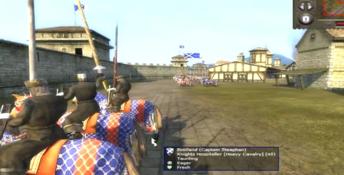
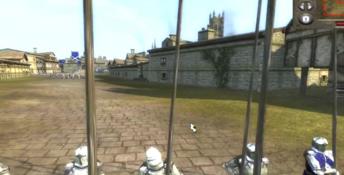
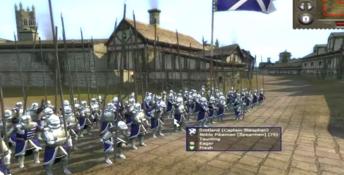

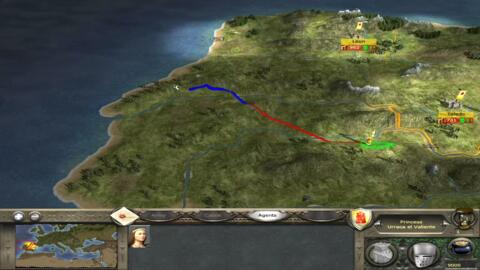

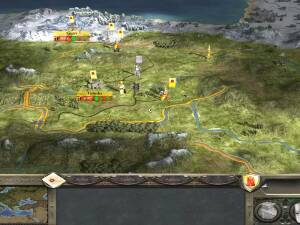

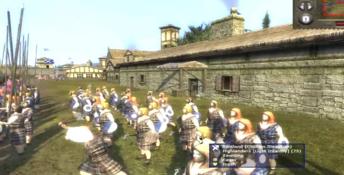
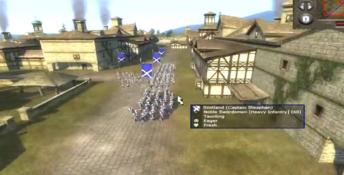
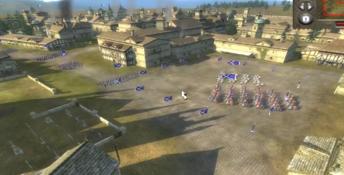
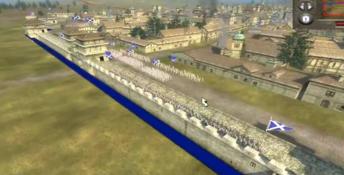
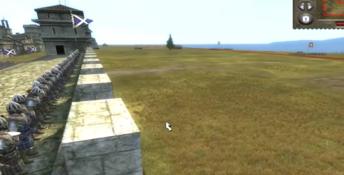
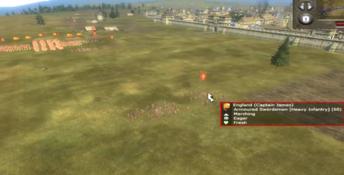



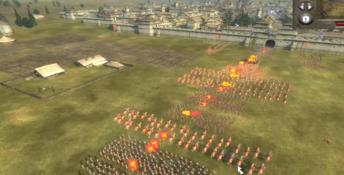
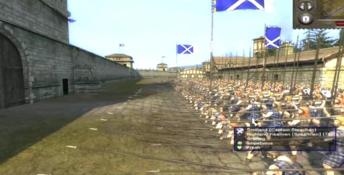
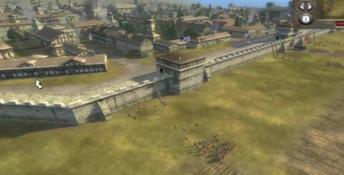
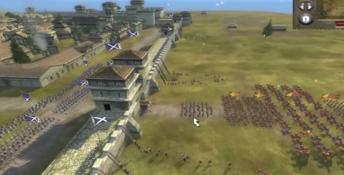
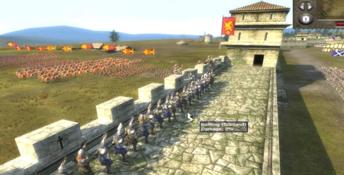
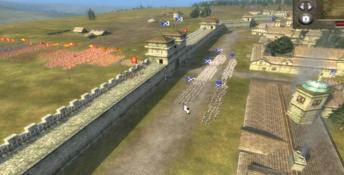
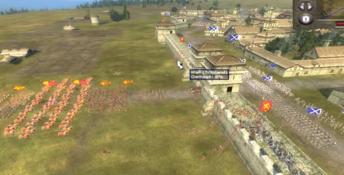
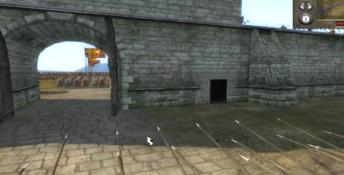

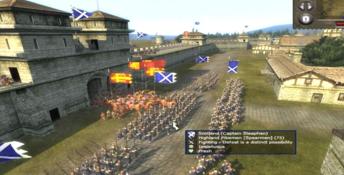
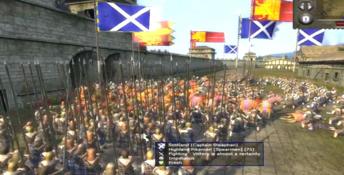
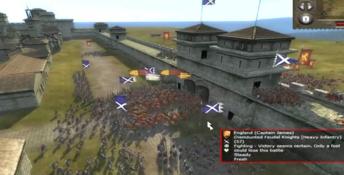
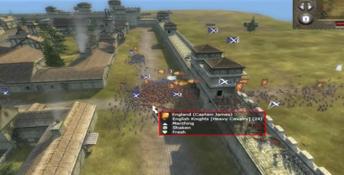
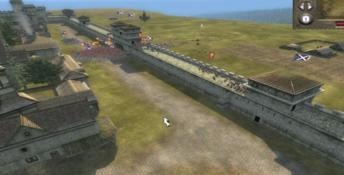
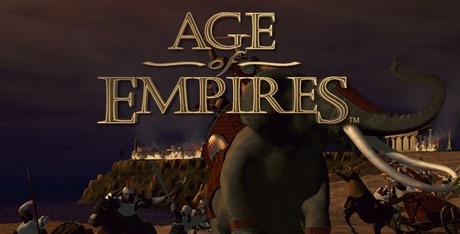 Age of Empires
Age of Empires
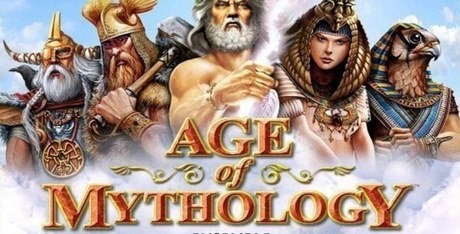 Age of Mythology
Age of Mythology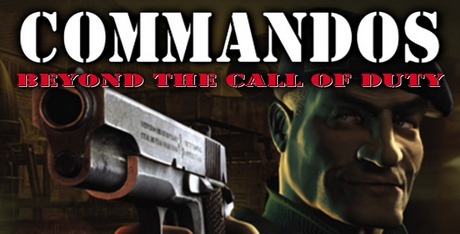 Commandos: Beyond the Call of Duty
Commandos: Beyond the Call of Duty
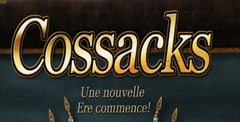 Cossacks: European Wars
Cossacks: European Wars
 Dune 2000
Dune 2000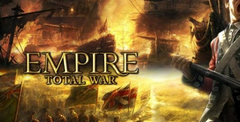 Empire: Total War
Empire: Total War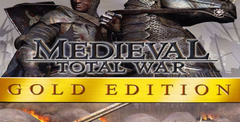 Medieval: Total War - Gold Edition
Medieval: Total War - Gold Edition
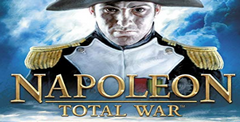 Napoleon: Total War
Napoleon: Total War